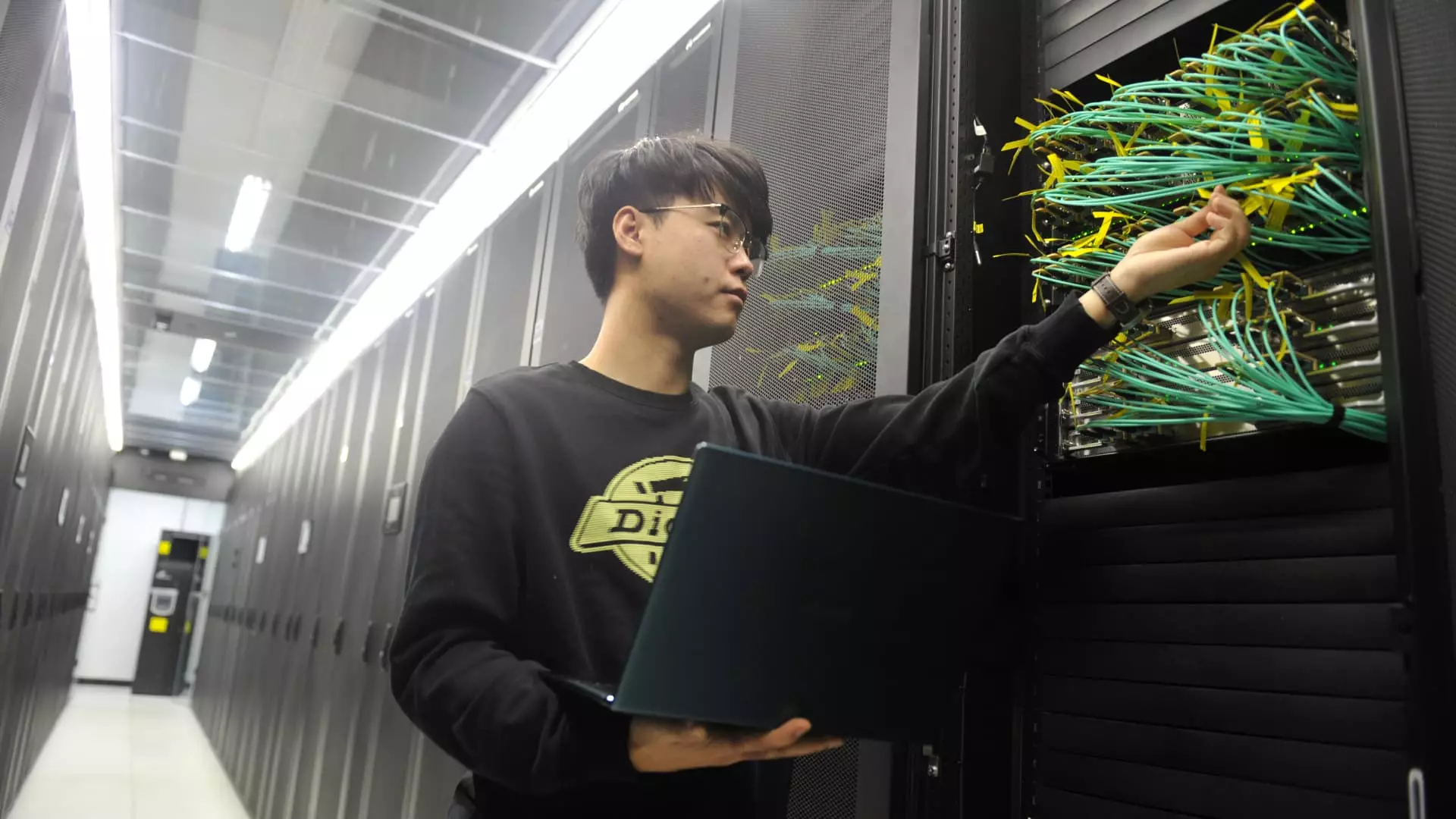The ongoing trade war between the United States and China has created an environment ripe with unpredictability. While many policy-makers believe that imposing tariffs will benefit American industries and create jobs, the reality is far more complex. As both nations retaliate against one another, the repercussions are poised to ripple across the global economy, often in ways that policymakers are ill-prepared to handle. The heightened tensions have sparked a wave of creativity and innovation within China, particularly in the realm of artificial intelligence (AI). This scenario raises a daunting question: could the U.S. be shooting itself in the foot by enacting these sanctions?
As analysts have indicated, in an attempt to bolster domestic industries, China is doubling down on AI development, driven by its ambition for technological supremacy. The shift towards generative AI tools, such as DeepSeek, signals a profound strategic pivot. These advances do not only enable Chinese companies to streamline their operations but also amplify their competitive edge on the global stage. As American industries become ensnared in the web of tariffs, the attention shifts towards how Chinese firms quickly adapt to these restrictions, potentially finding success where American companies falter.
Turning Challenges into Opportunities
The most startling realization is that punitive measures don’t always have the intended impact. For instance, during former U.S. President Donald Trump’s administration, tariffs aimed at protecting American businesses inadvertently fueled an increase in Chinese investment into local information technology. Corporations on the mainland began looking inward to fortify their capabilities, leading to rapid advancements in tech. Instead of crippling competition, U.S. tariffs could galvanize a new era of innovation in China that further enhances their export capabilities. If U.S. businesses remain lethargic under the weight of governmental restrictions, they risk being outpaced by these evolving Chinese firms, which are keenly focused on harnessing technology to drive growth.
Leading the charge are companies such as Kingsoft Office and Kingdee, both of which have recorded impressive user and revenue growth despite the challenges imposed by the trade war. Kingsoft, for instance, boasts a staggering 19.68 million monthly active users for its WPS application, thanks to the incorporation of AI features. Its agility in adapting to new market realities exemplifies how companies can turn adversity into opportunity, a lesson that American firms might need to take to heart.
The AI Boom: China’s Quantum Leap
In recent times, the AI sector has emerged as a beacon of hope for the Chinese economy. Analysts predict that this critical technology will rise significantly, driven by ambitious spending commitments by the Chinese government. Reports indicate that China’s AI-related spending is set to grow at an outstanding rate of 25% annually, contributing materially to the country’s GDP. The strategic investment in AI technologies not only mitigates the adverse effects of trade disputes but also represents a formidable response to U.S. geopolitical maneuvers.
China’s commitment to AI illustrates a pivotal strategy: when faced with obstacles, leverage your strengths. As domestic companies evolve and migrate towards digital solutions, they position themselves more favorably in the international marketplace. The emergence of localized tech solutions such as Huawei’s HarmonyOS represents an independent trajectory from Western operating systems, promoting national resilience in the face of continued pressures. The U.S. must recognize that these advancements only serve to bolster China’s position, complicating the competitive landscape for American firms.
Data Center Dominance Amid Tariff Turmoil
While tariffs are harming many sectors within the U.S. economy, China appears to be in a strong position concerning data center operations and cloud computing. Companies like GDS and Vnet are forecasted to see significant revenue growth, capitalizing on surging local demand for data infrastructure. The analysts’ predictions suggest that these segments are largely insulated from the threats posed by tariffs, promoting a burgeoning landscape for growth whilst the U.S. dwells in a cloud of uncertainty.
The strategic persistence exhibited by these firms indicates a broader trend: while the U.S. focus remains fixated on tariffs, China is busy constructing a robust digital infrastructure. The continuation of domestic investment in areas like cloud computing and internet data centers signals a proactive approach that not only cushions the shock from trade conflicts but also positions China as a future leader in global digital economies.
The High Cost of Mismanaged Tariffs
The prevailing sentiment is that America’s aggressive trade stance risks elevating China’s technological landscape rather than curbing it. Instead of instigating a decline in economic sway, tariffs may serve as a catalyst for Chinese innovation. The U.S. must urgently reevaluate its approach to avoid losing its competitive advantage against a rapidly evolving foe. With each new technological advancement from China, policymakers must grapple with the counterproductive nature of their current strategy, lest they become unwitting pawns in a game of international chess that they had hoped to control.

